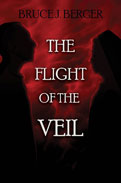
 |
New York City psychiatrist and widower Nicky Covo is a haunted man. His storied past from World War II as a Holocaust survivor is riddled with anguish and remorse. In 1944, a fourteen-year-old Nicky served with the andartes against German forces, unwittingly participating in bloodshed no youth should ever know and thrust into a horrific war he barely escaped. Now in 1990, Nicky lives in Brooklyn, NY, and mourns the loss of his wife, Adel. Everyday life for Nicky is dealing with his patients' complex situations while he attempts to mend his own family's private drama. The formative events of his youth are buried, a nightmare he longs to forget.
A letter from Greece, from someone named Abbess Fevronia, resurrects those traumatic events. Fevronia claims that the mute Sister Theodora living at the Holy Monastery of St. Vlassios is Nicky's sister. Nicky is distrustful of the letter, and the shock of it throws him into self-doubt and anxiety. He struggles to believe Theodora could be his youngest sister, Kal, since he always knew his family perished at Auschwitz. The single remnant he has in his memory of Kal is the crayon drawing of a blue jay she once gave to him.
With support from his friend-turned-love-interest Helen, Nicky grapples with the myriad issues and recollections that afflict him, from the experiences of his youth to this new revelation regarding the devout Greek Orthodox nun potentially being his sibling. Reluctantly, Nicky journeys back to Greece, dredging up old wounds, where he helps Fevronia unravel the enigma of Theodora in a mission "God has decreed." With Helen by his side, Nicky confronts painful memories and wrestles with spiritual conflicts. When he finally does meet Theodora, their encounter has unexpected results, giving Nicky a new lease on life.
There is a continual need for Holocaust stories, especially since the world now faces the loss of the last living Holocaust survivors. The premise of Berger's novel is intriguing, one that addresses the complexities and challenges of religion and humanity. It is part mystery and part historical fiction, exploring an underrepresented aspect of the Holocaust: Jewish conversion to Christianity. Some young Jews hiding with Christian families adopted the faith of their protectors, and from this, Berger examines the ambiguities of our faiths and beliefs in God.
Nicky no longer believes in a supreme being while pitted against the revelation that his sister's Jewish heritage is now lost to an unwavering devotion to Christianity. This internal fight serves much of Nicky's narrative. He scrutinizes everything about his life, seeking counsel from family and friends and clergy. His flashbacks of the war, written in the present tense, unfold as if in real-time, lending considerable tension to the narrative. His fractured reality and the scars of war that linger are a stark reminder of the life-long effects of trauma. Berger also contrasts Hebrew and Christian customs and beliefs, highlighting the labyrinthine struggles of religion and its significance during the Holocaust and today.
Much of the novel shifts between the years 1953 and 1990, alternating between Fevronia and Nicky primarily. Fevronia's storyline is arguably the stronger of the two, with the persistent Fevronia's call to restore the monastery and vineyard akin to a kind of Lilies of the Field plot. Her determination to see this work to completion and her devotion to caring for the mysterious Theodora are compelling in their own right.
It is a little more difficult to relate to Nicky, and there is somewhat of a slower pace and build-up of events with his character and storyline. He doesn't meet Theodora until near the end of the novel, at which point their meeting feels a bit anticlimactic. However, there is a subtle touch of the fantastical against Nicky's reality. Berger also remarks on other notable events of 1990, which some readers may remember, such as the case against the infamous Dr. Kevorkian and the US Supreme Court case of Dalton Prejean. Though a slim book, Berger's narrative still covers a wide breadth of history and religion, offering a thought-provoking introspection of ourselves and our humanity.